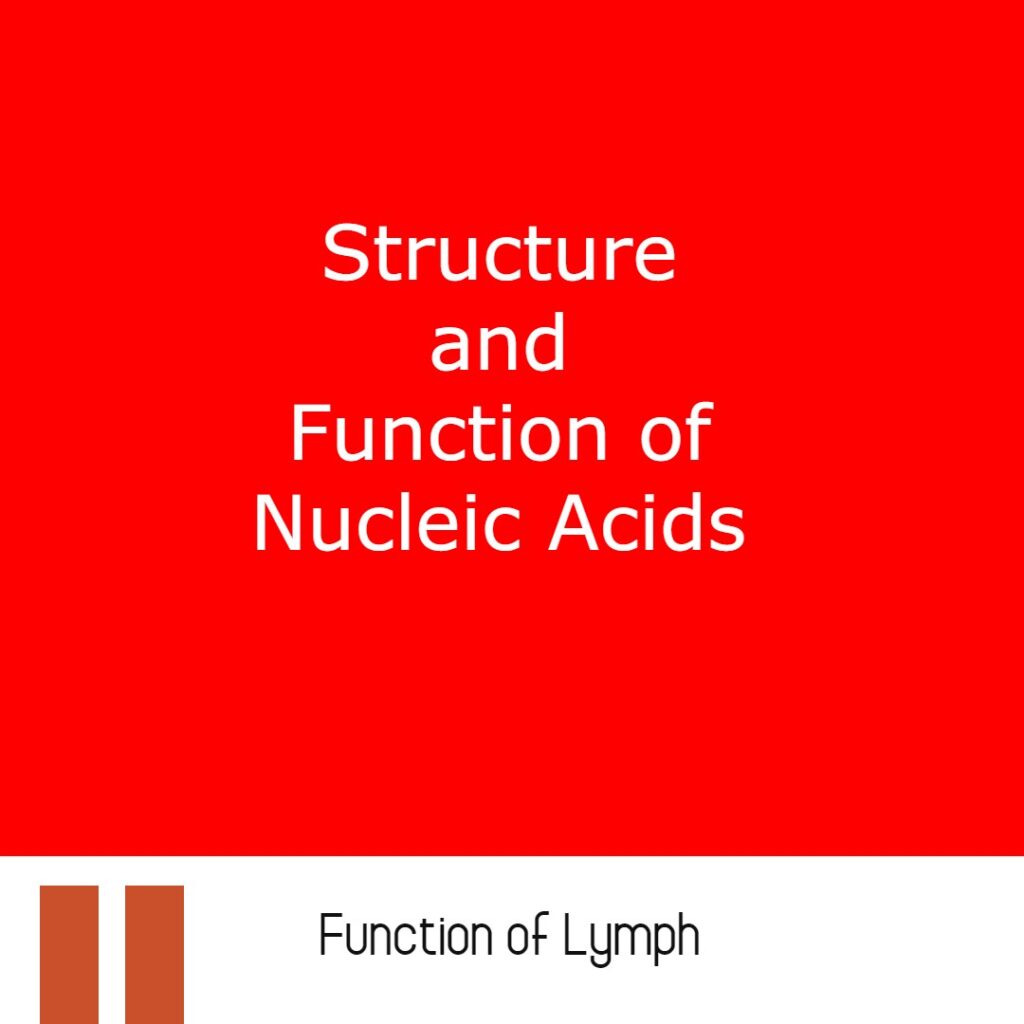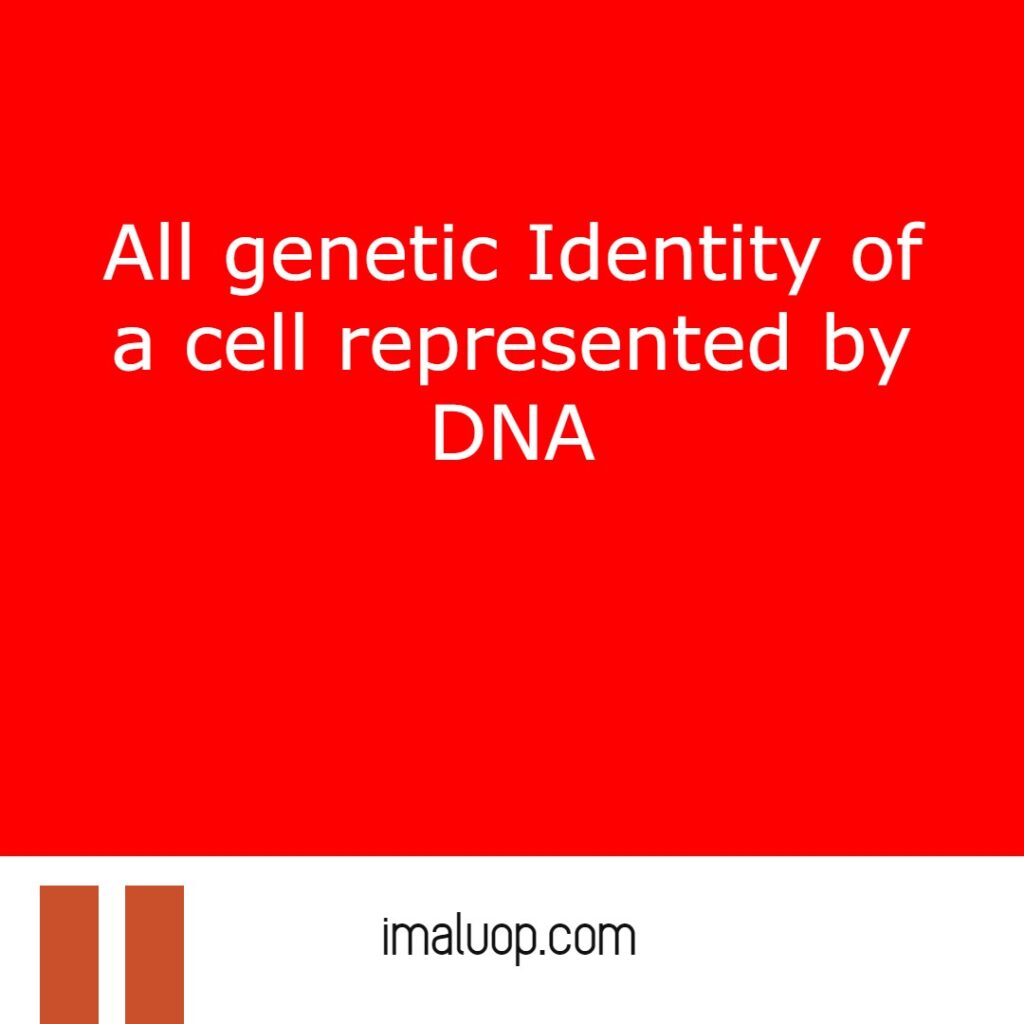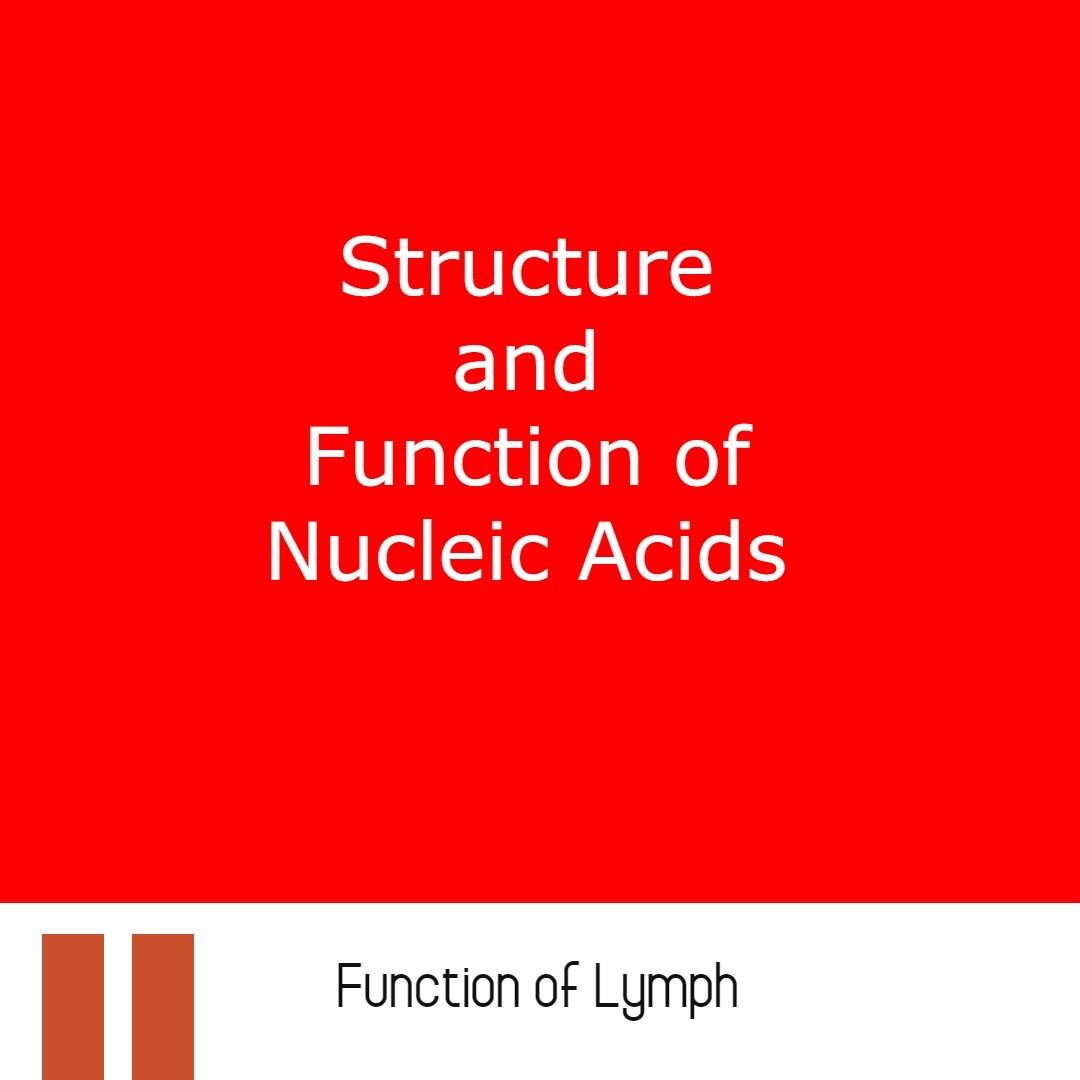Structure and Function of Nucleic Acids: Symbol of genetic information, Nucleic Acids are polymers made by the monomer of nucleotides. Nucleic acids are the main basis of genetic information of the cell. We have to study both deoxyribonucleic acid or DNA and ribonucleic acid or RNA to understand the structure and function of nucleic acids.
And for better understanding of both DNA and RNA we have to study first about the monomeric units of nucleic acid, nucleotides. These monomeric units are made of nitrogenous bases, sugar molecules and phosphate groups.

Table of Contents
Structure and function of nucleic acids:
Structure of nucleotides:
Sugar molecules: In nucleotides either ribose or deoxyribose sugar molecules present in furanose state. Ribose and deoxyribose sugar present in nucleotides are pentose sugar.
Nitrogenous base: In each nucleotide a single nitrogenous base present which may be purine base of pyrimidine base. Adenine and purine two types of purine base present in nucleotide units. Three types of pyrimidine base can be found in nucleotide units – thiamine , cytosine and uracil. So in a nucleotide unit one of these 5 nitrogenous bases can be found.
One pentose sugar molecule joins with one nitrogenous base to form a nucleoside unit.
Phosphate group: When a phosphate group join with a nucleoside unit it then form a complete nucleotide monomeric units.
Structure of deoxyribonucleic acid (DNA):
In DNA numerous nucleotides monomeric units join end to end by phosphodiester bond. Phosphodiester bond join the monomer to form a DNA polymer which carries genetic information of a cell. Deoxyribonucleotides are present in DNA as nucleotide units.

If adenine present as nitrogen base in deoxyribonucleotide then it named as deoxyadenosine monophosphate or dAMP. If guanine present then it named as deoxyguanosine monophosphate or dGMP. If cytosine present as nitrogen base then it is named as deoxycytidine monophosphate or dCMP.
If thymine present as nitrogen base then it is named as deoxythymidine monophosphate or dTMP. In DNA deoxyribonucleotides are arranged on a chain with two complementary nucleotides each other. In staircase model of DNA each complementary pair of deoxyribonucleotides are either guanine- cytosine or adenine- thymine pairs.
Structure of Ribonucleic Acids:
RNA is also a polymer like DNA but it is made of ribonucleotides monomeric units. Ribonucleotides arrange in linear fashion to form RNA polymer strands. Each ribonucleotide unit is again made of a ribose sugar molecule, a nitrogen base and phosphate group like in case of deoxyribonucleotides of DNA.
But differing from DNA here nitrogen base thymine replaced by uracil and other three nitrogen bases are the same as in case of deoxyribonucleotides – Guanine, Cytosine and Adenine.
Cells make copies of RNA from DNA by a biological process named as transportation which is necessary for protein synthesis in cells. Depending upon what function they are categorised as messenger RNA or mRNA, ribosomal RNA or rRNA and transfer RNA or tRNA.
Function of Nucleic Acids:
Nucleic acids are responsible for keeping all genetic information of a cell and transfer the genetic information from generation to another generation. All genetic Identity of a cell represented by DNA. To maintain continuity of a species it is very important to transfer genetic information from one mother cell to progeny cell and DNA plays a great role in this process.

For protein synthesis cells need instructions about which types of protein have to synthesis. RNA gives this information to the ribosome which is the protein factory of the cells. So Nucleic Acids also have a contribution to synthesis protein in cells.
DNA is the major controller of a cell which determines cellular metabolism. Development and differentiation of an organism is also controlled by nucleic acids.
Mutation occurring in DNA sometimes helps an organism to adapt in adverse conditions so Nucleic Acids also play a great role in evolution.
Read More:
Reference: Structure and Function of Nucleic Acids
Hi Everyone!!! Welcome to Imaluop. Imaluop always try to learn some new and he want to share to other people. Here we will try to learn various topics on Science, specially on Biological Sciences.
